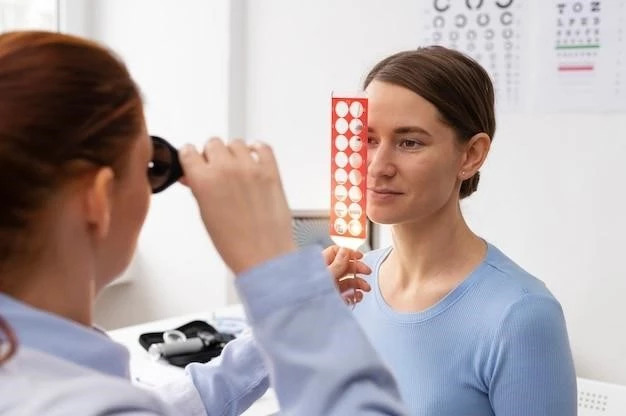Introduction to Arteriosclerotic Retinopathy
Poorly controlled hypertension can lead to various systemic damages‚ including the retina‚ termed as target-organ damage. This damage affects the retinal vessels‚ leading to conditions like arteriosclerotic retinopathy.
Arteriosclerotic retinopathy is a condition where the blood vessels supplying oxygen to the retina of the eyes are damaged. This damage impacts the thin‚ light-sensitive membrane located at the back of the eyes responsible for translating light into images in our environment. The disruption of this oxygen supply results in various ocular complications‚ further complicating visual health.
Association with Atherosclerosis
Studies investigate the link between retinopathy and atherosclerosis risk factors in individuals with diabetes‚ providing insights into potential associations between these conditions.
Definition and Overview
Arteriosclerotic retinopathy refers to a condition where the blood vessels supplying oxygen to the retina of the eyes are damaged‚ affecting the thin membrane crucial for translating light into images. This damage results in various ocular complications impacting vision health.
Grading Methods for Arteriosclerotic Retinopathy
A novel approach in research proposes a contour enhancement convolutional neural network model for grading arteriosclerotic retinopathy based on image merging techniques‚ demonstrating promising outcomes in accuracy and effectiveness compared to existing methods.

Clinical Aspects of Retinopathy
Arteriosclerotic retinopathy clinically affects the blood vessels supplying oxygen to the retina‚ impacting vision health and leading to various ocular complications.
Hypertensive Retinopathy vs. Arteriosclerotic Retinopathy
Hypertensive retinopathy and arteriosclerotic retinopathy demonstrate distinctive clinical manifestations due to different underlying mechanisms and vascular damage patterns. Understanding these differences aids in accurate diagnosis and targeted management strategies.
Signs and Symptoms
Signs and symptoms of arteriosclerotic retinopathy may include visual disturbances‚ such as decreased visual acuity‚ floaters‚ or changes in color perception‚ along with retinal vessel abnormalities observed during eye examinations.

Diagnosis and Risk Factors
Arteriosclerotic retinopathy can be diagnosed through retinal examinations‚ where the condition’s severity and progression are assessed. Risk factors include hypertension‚ diabetes‚ and atherosclerosis‚ among others.
Risk Factors Associated with Arteriosclerotic Retinopathy
Arteriosclerotic retinopathy is commonly linked to risk factors such as hypertension‚ diabetes‚ atherosclerosis‚ and systemic vascular conditions. Understanding these risk factors is crucial for early diagnosis and effective management strategies.
Diagnostic Techniques
Diagnostic techniques for arteriosclerotic retinopathy involve retinal examinations to assess vascular abnormalities‚ fundus photography to visualize retinal changes‚ and optical coherence tomography for detailed imaging of retinal structures. These tools aid in accurate diagnosis and monitoring of the condition’s progression.
Treatment of arteriosclerotic retinopathy focuses on controlling arterial hypertension to minimize further retinal damage. Management strategies include lifestyle modifications and medications to maintain blood pressure within healthy ranges.
Treatment and Management
Efficient management of arteriosclerotic retinopathy includes interventions aimed at controlling arterial hypertension through lifestyle modifications and pharmacological approaches. Emphasizing blood pressure regulation is vital to preserve retinal health and prevent further visual impairment.
Novel Approaches in Treatment
A study proposes innovative treatment approaches for arteriosclerotic retinopathy using contour enhancement convolutional neural network models for accurate grading. This novel method shows enhanced effectiveness in diagnosing and managing the condition.
Ongoing research focuses on developing innovative grading tasks for arteriosclerotic retinopathy using advanced deep learning techniques‚ aiming to enhance diagnostic accuracy and management efficacy.
Research and Development
Recent studies focus on the development of innovative grading tasks for arteriosclerotic retinopathy using advanced deep learning techniques‚ aiming to improve diagnostic accuracy and treatment outcomes.
Advancements in Deep Learning Techniques
Recent advancements in deep learning techniques introduce innovative methods for diagnosing and managing arteriosclerotic retinopathy. These approaches utilize convolutional neural networks to enhance accuracy in grading retinal conditions‚ improving overall treatment outcomes.
Challenges and Future Perspectives
Addressing concerns related to vision loss in individuals with arteriosclerotic retinopathy is crucial. Emerging trends in research aim to enhance diagnostic accuracy and explore innovative treatment modalities for improved outcomes.
Addressing Vision Loss Concerns
Emerging trends in arteriosclerotic retinopathy research focus on addressing concerns related to vision loss by enhancing diagnostic accuracy and exploring innovative treatment modalities for improved visual outcomes.
Emerging Trends in Arteriosclerotic Retinopathy Research
Recent developments in arteriosclerotic retinopathy research highlight emerging trends focusing on enhancing diagnostic accuracy‚ exploring novel treatment modalities‚ and improving visual outcomes through advanced technological and therapeutic approaches.
Conclusion
In conclusion‚ arteriosclerotic retinopathy poses challenges in visual health‚ emphasizing the importance of accurate diagnosis and innovative treatment approaches to enhance outcomes‚ reflecting the continuous evolution of research in this field.
Summary of Key Findings
Key findings in the realm of arteriosclerotic retinopathy research underscore the importance of enhancing diagnostic accuracy‚ exploring novel treatment modalities‚ and embracing technological advancements to improve visual health outcomes. These advancements signal a positive trajectory in the evolution of retinopathy management and care.
